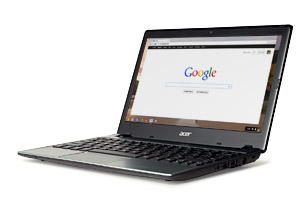Laptops In Lessons
Using Internet access devices in Mathematics lessons

Top Ten Tips
Although the title of this section is Laptops In Lessons the information on these pages applies in the main to any computing device that has an Internet connection. So whether it be an expensive laptop, a MacBook, a cheaper Chrome book or a large smartphone, I hope you find the following information useful.

Many students around the world have access to computers in all of their lessons while others might only occasionally get to benefit from modern technology. Teachers are developing different ways of teaching which make use of this technology and students' learning is quite different to that of their parents' generation.
Based on my experience of introducing a one to one laptop programme in a large international school I have put together suggestions, advice and tips for mathematics teachers and those involved in managing the academic use of computers in schools.
- Always have a 'plan B' for your lesson just in case the technology fails.
- Ask students to close their laptops (screen down to keyboard) when
you want to focus their attention on the board or for a whole class
discussion.
- Using one laptop between two students encourages discussion. Even if
there are enough laptops for one each this is a good strategy to adopt
occasionally.
- Students will sometimes try multitasking and have other
applications open during their Maths lessons. All but the most devious
can be identified by viewing the status bar at the bottom of the screen
and checking that only the programs required for the lesson are showing.
- Most computers will have a program that simulates a traditional
electronic calculator. In many cases though a spreadsheet will be more
useful for performing calculations and also allow the students to 'show
their working'
- Many teachers have found that Microsoft's 'One Note' provides a good
substitute for an exercise book allowing students to create and store
their notes in an organised way.
- For a lesson involving students visiting many websites it is wise to
have all the URLs as hyperlinks in a document, webpage,
LMS or portal so that time
isn't wasted typing in the website addresses.
- If students are to watch a video or access some other large file
from the Internet you may plan to stagger when they access this resource
so they are not all downloading at the same time which may slow down the
process.
- Keep safety in mind if students need to plug their computers into
wall electrical sockets. Trailing wires can be dangerous. Rearranging
desks might allow safer access to the wall sockets.
- Though it might aid their work in Mathematics, do not encourage
students to use illegal or 'pirate' software.
Activity Ideas
"
"
Callum Arthur,
Tuesday, August 29, 2017
Do you have any tips for
using laptops (or other portable computers) in Mathematics lessons?
Click here to enter your
ideas.


